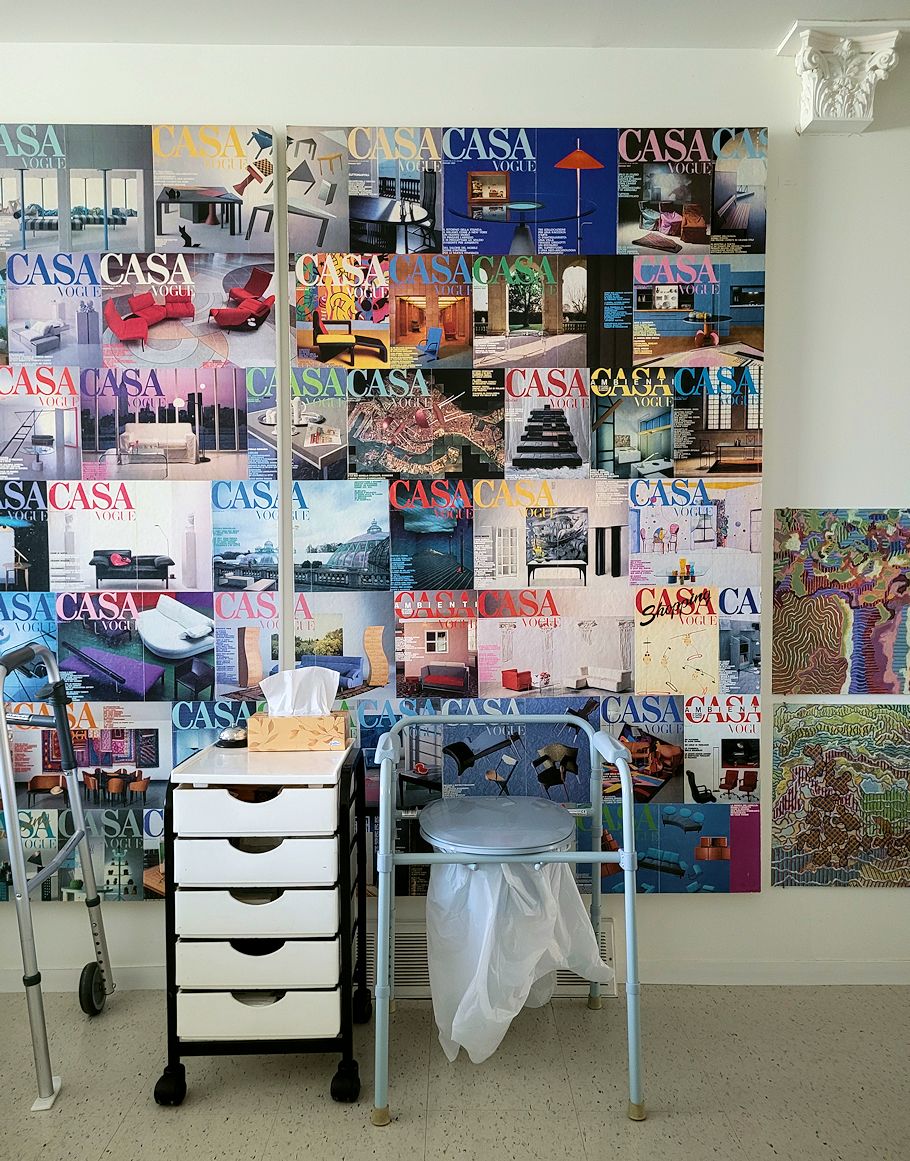
20230726_111859.jpg
2023.07.26
Do you know your neighbors?
I've lived on the same block since 1957, and I've found that connections come and go as each year goes by. My immediate next door neighbor has been the same person all these years, so Jean and I definitely have a connection. In the 'old days' there were a number of close relatives also living on my block, so there was a real connection there. Right now, I love how most of my black neighbors call me "Mr. Steve" and I'm sure virtually all my neighbors actually wonder what the hell I'm still doing here.
Before the "white man" came, the valley I live in was a sacred burial place. There's no record of this, I just feel it. I can still remember when Diane moved here (she's the one that started "Mr. Steve"), she right away mentioned how quiet the street is. I said, "Yeah, it's always been quiet." I didn't tell her why though.
2005.07.26
we all live in america
Oana [Stanescu], please write a new Elements of Semiology someday. Any pictures of Romanian Chinatowns?
2005.07.26
architecture school and suicide
I only knew one person, Neil Shepherd, who committed suicide within a month of the bad review he received at his thesis project presentation. That was June 1979 at a not-at-all elite school.
Maybe it's a good thing I don't 'teach' architecture. For some reason, when it comes to architecture, I see no reason to show any mercy.
2005.07.26
architecture school and suicide
The last time I was with Neil was giving him a ride in my new Toyota Corolla Liftback. Neil was working with my friend Ron, but Ron wasn't there when I came to show him my new car, so I asked Neil if he wanted to go for a ride. Neil was a rare black architecture student back then, and thus I think a whole bunch of issues that most architecture students don't have to deal with were there for Neil.
2005.07.26
architecture school and suicide
Neil died in an engine-running car within a closed garage.

In this exercise it is presupposed that the study of history is a source for direction towards the future. It necessarily demands an acknowledgment of man's fallibility and misjudgment. The concept of removing past mistakes (by whatever action necessary) for the enhancement of an urban situation is truly responsibility and progressive. To be able to admit that new is not always better, and, more importantly, that history must not be viewed as sacred or irreversible is a significant achievement. The Victor Emmanuel II Monument was at one time new in an ancient city. It was not designed to mess with the existing context, but to dominate it, and it was successful in that respect. In neither scale or color nor function did the monument accept its responsibility towards the Roman fabric.
In terms of physical form, there exists the recurrent question of what should be done in the end. Is it more appropriate to replicate the spaces and surfaces of the surrounding buildings or to derive an attitude and a method which employs the scale and character of the surrounding structures?
This scheme proposes an attitude of building which will evolve over time. It rejects the concept of the grand design which will transform the site in one complete step. As Rome is/was an accumulation of buildings of diversity and individuality, so should this site be developed. However, diversity and individuality at the expense of respectful coexistence will not suffice for a site of this importance, both in location and in historical significance.
This project reflects the first stage massing analysis and the second stage schematic layout for a philosopher's academy.
--Neil Shepherd
HISTORY: MEANS AND ENDS
To remember, lest we repeat
To study, lest we forget
To clarify and integrate and recover those threads which bound divergencies together
To be conscious, lest ends be confused with current means. . .
2005.07.26
|

